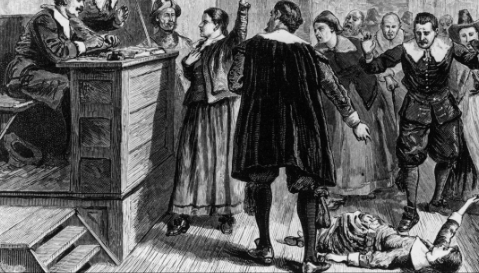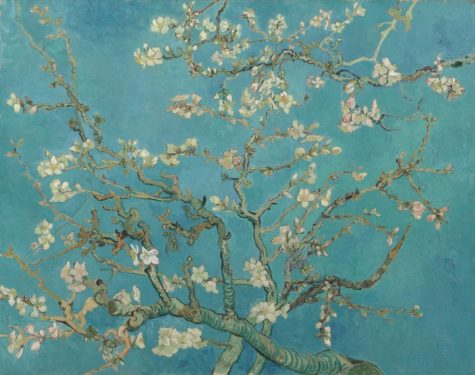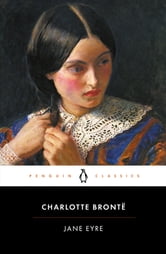The Salem Witch Trials: What Really Happened?

October 31, 2022
BUBBLE BUBBLE, TOIL AND TROUBLE! When one hears about witches, the first thoughts are green-faced, whart-covered, purple tights type of witches. There are many misconceptions of witches, especially surrounding events that “involved” them. The Salem Witch Trials are an excellent example of what happens when popular culture is involved in interpreting historical events. The modern depictions of the event are not necessarily true. In fact, there are many misconceptions to the Salem witch trials. However, in order to figure out which is true or false, one has to look at the beginning.
THE ORIGIN
The Salem Witch Trials began in Salem, Massachusetts from 1692 through 1693. These trials began after a group of young girls in Salem that claimed to be “possessed by the devil” and accused several women in their town of witchcraft.
Two girls, Elizabeth Parris and Abigail Williams, began with fits with uncontrollable screaming and violence. Then, the behavior spread to others such as Ann Putnam Jr., Mercy Lewis, Elizabeth Hubbard, Mary Walcott and Mary Warren.
These fits were the catalyst for the accusations of witchcraft directed toward towards Tituba – the slave of the Parris family, a homeless beggar by the name of Sarah Good, and the poor and elderly Sarah Osborn.
Both Sarah Good and Sarah Osborn denied their involvement, but Tituba “confessed” to witchcraft and informed the people that she had accomplices. Although she was most likely seeking to avoid conviction, she gave the name of others who she claimed were witches. Thus began the spread of hysteria throughout the colony.
However, what caused the accompanying hysteria and surge of accusations? Religion was central to the everyday lives of those in Salem, predominantly the Puritan religion. Therefore, the belief in the supernatural or more specifically, demonic practices such as witchcraft, was central to their understanding of morality. Witchcraft was usually believed to be given to people by the Devil, and therefore all practices were prohibited and viewed as immoral. The trials paired with territorial tensions between settlers and the natives, began the unruly year of death and destruction.
THE TRIALS
Trials are usually about justice, and include evidence, a lawyer, a defense. However, this was not the case for many victims of these trials. In many of the trials, the testimonies of those accused were ignored.. Sarah Good and Osborn along with Tituba were all thrown into jail,a continuous pattern throughout the trials.
Evidence against the accused usually consisted of confessions, testimonies of two eyewitnesses, and/or spectral evidence such as the fits the girls had which was explained as an apparition. After the trial, many were sent to unkempt jails where there was dirt floor, infested with lice, dark and the smell wasn’t helpful at all. The people in these jails were deprived of their human rights along with legal and property rights. Many were held there until their execution, but because of the condition of the jail, many died in their cells before trials or their execution.
It was neighbor against neighbor, children against parents, sisters against brother, and husband against wife. Of the 200 people who were accused, 25 were killed and 19 hanged at Proctor’s Ledge. Five others died in jail, and one was crushed to death.
MYTHS ABOUT WITCHES
A common misconception is that all the accused were women. The majority were women, but there were men and children involved as well. During the Salem Witch Trials, six men died with the youngest being five years old. In Europe, men were a slight minority still and in the year following the witch hunting, 6000 men were executed.
Another very common misconception is that all witches were burned at the stake. In fact, this was not the case in the new world. Instead, many were hanged. Women were burned to death in Scotland, but those women were stricken from their lives beforehand.
HOW WITCHES HAVE BEEN DEPICTED IN MAINSTREAM MEDIA?
Witches have been utilized by mainstream media consistently within the last 100 years making them increasingly more popular. Whether it’s a popular netflix series, a new Disney plus movie, or a classical Shakespeare play , the media has created entertainment from the concept of witches. . The fascination from witches may come from their magical abilities or their peculiar potions, witches are a big hit in the media. Witches can be seen in books and plays such as Macbeth by William Shakespeare or even The Crucible by Arthur Miller. Some movies can include Hocus Pocus, Hocus Pocus 2 (review on Rampage) or The Chilling Adventures of Sabrina all feature witches whether mean or humorous.
THE VICTIMS OF THE SALEM WITCH TRIALS







